
Szczecin: The Hidden Gem of Poland's West Coast
Discover Szczecin: Poland's enchanting city of history, nature, and culture, offering a unique blend of architectural marvels, lush green spaces, and vibrant maritime charm.
Szczecin, nestled in the northwest of Poland, is a city brimming with history, culture, and natural beauty. Often overlooked by travelers, Szczecin offers a unique blend of architectural marvels, lush green spaces, and a vibrant maritime atmosphere. One of the city's most iconic landmarks is the Pomeranian Dukes' Castle, which stands as a testament to its rich past. A walk through the Old Town reveals charming cobblestone streets, colorful facades, and bustling squares, each telling a story of the city's evolution through the ages. For nature enthusiasts, Szczecin is a paradise. The city is surrounded by water, with the Oder River and Dąbie Lake providing picturesque views and opportunities for boating and water sports. The Waly Chrobrego Promenade is a must-visit, offering breathtaking panoramas of the river and the nearby port. Szczecin's parks, such as Kasprowicz Park and the Rose Garden, are perfect for leisurely strolls and picnics, making it easy to unwind amidst nature. Szczecin's cultural scene is equally captivating. The city boasts several theaters, museums, and galleries, including the National Museum and the Contemporary Art Center. Music lovers will appreciate the Philharmonic Hall, known for its striking modern architecture and world-class performances. The local cuisine is a delightful mix of traditional Polish flavors and international influences, with numerous restaurants and cafes serving delicious meals. Whether you're exploring its historical sites, enjoying its natural beauty, or immersing yourself in its culture, Szczecin promises an unforgettable experience.
Local tips in Szczecin
- Visit the Pomeranian Dukes' Castle for a glimpse into the city's rich history and enjoy panoramic views from the castle tower.
- Take a relaxing walk along the Waly Chrobrego Promenade for stunning views of the Oder River and the port.
- Explore the Old Town to experience the charm of cobblestone streets, colorful buildings, and historical landmarks.
- Spend an afternoon at Kasprowicz Park or the Rose Garden for a peaceful escape in nature.
- Don't miss a performance at the Philharmonic Hall, renowned for its modern architecture and excellent acoustics.
- Try local dishes at traditional Polish restaurants to savor the authentic flavors of Szczecin's cuisine.
- Visit the National Museum and the Contemporary Art Center to explore the city's rich cultural heritage and artistic expression.
Szczecin: The Hidden Gem of Poland's West Coast
Szczecin, nestled in the northwest of Poland, is a city brimming with history, culture, and natural beauty. Often overlooked by travelers, Szczecin offers a unique blend of architectural marvels, lush green spaces, and a vibrant maritime atmosphere. One of the city's most iconic landmarks is the Pomeranian Dukes' Castle, which stands as a testament to its rich past. A walk through the Old Town reveals charming cobblestone streets, colorful facades, and bustling squares, each telling a story of the city's evolution through the ages. For nature enthusiasts, Szczecin is a paradise. The city is surrounded by water, with the Oder River and Dąbie Lake providing picturesque views and opportunities for boating and water sports. The Waly Chrobrego Promenade is a must-visit, offering breathtaking panoramas of the river and the nearby port. Szczecin's parks, such as Kasprowicz Park and the Rose Garden, are perfect for leisurely strolls and picnics, making it easy to unwind amidst nature. Szczecin's cultural scene is equally captivating. The city boasts several theaters, museums, and galleries, including the National Museum and the Contemporary Art Center. Music lovers will appreciate the Philharmonic Hall, known for its striking modern architecture and world-class performances. The local cuisine is a delightful mix of traditional Polish flavors and international influences, with numerous restaurants and cafes serving delicious meals. Whether you're exploring its historical sites, enjoying its natural beauty, or immersing yourself in its culture, Szczecin promises an unforgettable experience.
When is the best time to go to Szczecin?
Iconic landmarks you can’t miss
Wały Chrobrego
Explore Wały Chrobrego, a captivating historical landmark in Szczecin, Poland, renowned for its stunning views and rich cultural heritage.

Pomeranian Dukes' Castle in Szczecin
Explore the Pomeranian Dukes' Castle in Szczecin - a stunning historical landmark with rich cultural experiences and breathtaking architecture.

Plac Jasne Błonia im. Jana Pawła II
Discover the tranquil charm of Plac Jasne Błonia im. Jana Pawła II, a stunning park in Szczecin perfect for relaxation and cultural exploration.
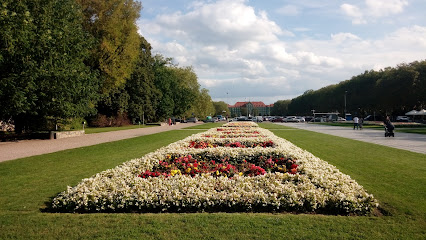
Kasprowicz Park
Explore the natural beauty and cultural treasures of Kasprowicz Park in Szczecin, a perfect retreat for relaxation and recreation.
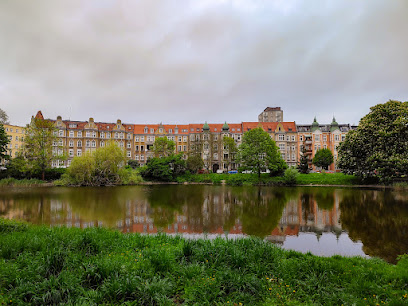
Harbour Gate
Discover the historical charm of Harbour Gate in Szczecin, a monument steeped in maritime heritage and architectural beauty.

Szczecin Boulevards
Explore the picturesque Szczecin Boulevards, a scenic waterfront paradise with stunning views, lush greenery, and vibrant culture in Poland.

Museum of Technology and Transportation - Art Depot in Szczecin
Explore the captivating Museum of Technology and Transportation in Szczecin, where the evolution of transport comes to life through engaging exhibits and historical treasures.

Archcathedral Basilica of St. James the Apostle
Discover the stunning beauty and rich history of the Archcathedral Basilica of St. James the Apostle, a must-visit landmark in Szczecin.

Różanka Rose Garden
Explore the enchanting beauty of Różanka Rose Garden in Szczecin, a botanical haven filled with vibrant roses and serene landscapes.

Park Żeromskiego
Discover the serene beauty of Park Żeromskiego in Szczecin, a perfect escape with lush landscapes, tranquil ponds, and family-friendly activities.

Craneosaurs
Explore the wonders of the prehistoric world at Craneosaurs in Szczecin, an exhilarating attraction for dinosaur lovers and families alike.

Solidarity Square
Explore Solidarity Square in Szczecin, a city park that honors history while providing a peaceful retreat for tourists and locals alike.
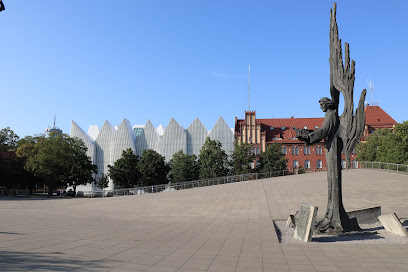
Underground Stettin Routes
Uncover Szczecin's hidden history and art at the Underground Stettin Routes, a captivating tourist attraction beneath the city's surface.
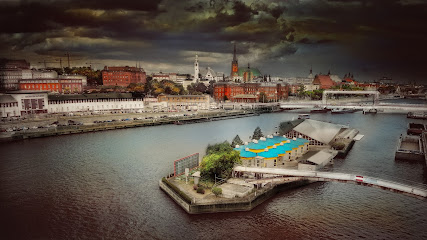
Bismarck Tower in Szczecin
Discover breathtaking views and rich history at Bismarck Tower, Szczecin's iconic landmark and observation deck.

Memorial of the Poles' Feat
Explore the Memorial of the Poles' Feat in Szczecin, a stunning tribute to Polish courage surrounded by beautiful parkland.

Unmissable attractions to see
Wały Chrobrego
Experience the stunning views and rich history at Wały Chrobrego, Szczecin's iconic waterfront promenade and cultural hub.

Plac Jasne Błonia im. Jana Pawła II
Explore the tranquility and cultural richness of Plac Jasne Błonia im. Jana Pawła II, a beautiful park in Szczecin perfect for relaxation and exploration.

Kasprowicz Park
Explore the tranquil beauty of Kasprowicz Park, a lush oasis in Szczecin that offers recreation, nature, and cultural heritage for an unforgettable experience.

Brama Portowa
Explore the historic Brama Portowa in Szczecin, a stunning monument that captures the city's maritime heritage and architectural grandeur.

Centrum Słowian i Wikingów
Immerse yourself in the history of the Slavs and Vikings at this dynamic open-air museum, perfect for all ages and interests.

Crooked Forest in Poland
Explore the captivating Crooked Forest in Poland, where nature's artistry creates a mystical landscape of uniquely bent pine trees.

Karlowicz Philharmonic
Discover the Karlowicz Philharmonic in Szczecin, a stunning venue where music, architecture, and culture unite to create unforgettable experiences.

Archcathedral Basilica of St. James the Apostle
Explore the Archcathedral Basilica of St. James the Apostle in Szczecin, a stunning Gothic cathedral filled with history and breathtaking architecture.
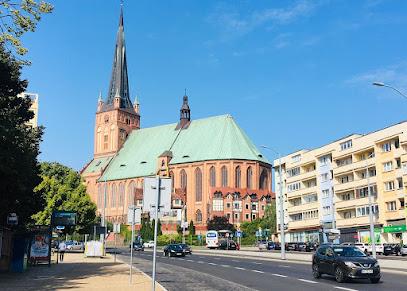
Craneosaurs
Explore the fascinating world of Craneosaurs in Szczecin, a must-visit destination for dinosaur enthusiasts and families seeking adventure.
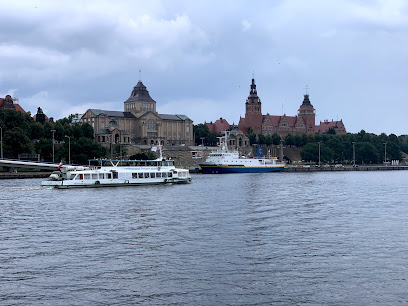
Holiday Park Szczecin
Holiday Park Szczecin: A fun-filled amusement park offering thrilling rides, delicious treats, and endless entertainment for all ages in the heart of Szczecin.

Opera at the Castle
Immerse yourself in the enchanting world of opera at the historic Opera at the Castle in Szczecin, Poland, where culture and elegance meet.

Underground Stettin Routes
Uncover the fascinating history and artistry of Szczecin in the mesmerizing Underground Stettin Routes, a unique blend of tunnels and cultural heritage.

Wieża Quistorpa
Explore the historical charm and natural beauty of Wieża Quistorpa in Szczecin, a must-visit landmark for every traveler.

Roman Catholic church Sacred Heart of Jesus
Explore the Sacred Heart of Jesus Church in Szczecin - a stunning blend of history, art, and spirituality.

Botanical Garden in Szczecin
Explore the enchanting Szczecin Botanical Garden, a serene oasis filled with diverse flora, tranquil pathways, and captivating landscapes for every nature lover.

Essential places to dine
NOWY BROWAR SZCZECIN
Experience the best of Szczecin's craft beer culture at Nowy Browar Szczecin, where great brews meet delicious cuisine in a vibrant setting.

Colorado
Discover the best steakhouse in Szczecin at Colorado – where Polish flavors meet culinary excellence.

Karczma Polska
Savor authentic Polish flavors at Karczma Polska in Szczecin – a family-friendly restaurant serving traditional dishes in a cozy atmosphere.

Columbus Restaurant
Discover exquisite flavors at Columbus Restaurant in Szczecin - where American, Italian, and Polish cuisines meet in an elegant setting.

Trattoria Toscana
Experience authentic Italian flavors at Trattoria Toscana in Szczecin – where every meal tells a delicious story.

Ukraineczka
Discover authentic Ukrainian and Lithuanian flavors at Ukraineczka in Szczecin - a culinary gem celebrating Eastern European cuisine.

Czech Restaurant Hospudka
Discover authentic Czech flavors at Hospudka in Szczecin - where tradition meets taste in a cozy setting.
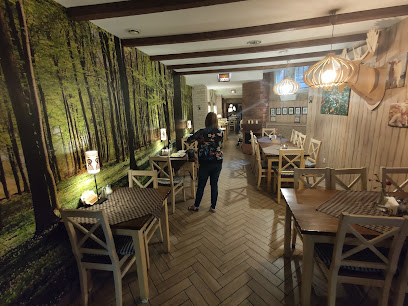
Bajgle Króla Jana
Experience the best bagels in Szczecin at Bajgle Króla Jana – where every bite is a delight!

Brasileirinho Brazylijska Kuchnia & Bar
Savor the essence of Brazil at Brasileirinho - where authentic flavors meet vibrant ambiance in Szczecin.

Paprykarz Fish Market
Experience Szczecin's seafood paradise at Paprykarz Fish Market - fresh catches and authentic flavors await every visitor.

Bar Mleczny Turysta
Discover authentic Polish flavors at Bar Mleczny Turysta - an inexpensive bistro experience in Szczecin.

Buddha Thai & Fusion Restaurant
Experience authentic Thai cuisine and innovative fusion dishes at Buddha Thai & Fusion Restaurant in Szczecin.

Radecki
Experience authentic Italian cuisine at Radecki in Szczecin, where every dish is crafted with passion and tradition.
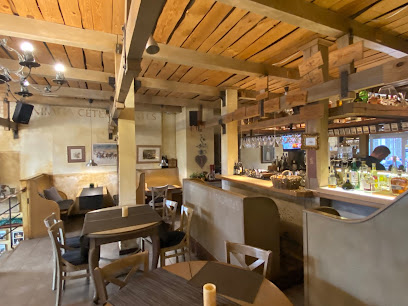
Steakhouse EVIL Szczecin
Experience the best of American cuisine at Steakhouse EVIL in Szczecin, where premium steaks and exceptional service await you.

Manekin
Experience delectable Polish cuisine at Manekin in Szczecin – where tradition meets modern dining in a vibrant setting.

Markets, malls and hidden boutiques
Galaxy Centrum
Explore Galaxy Centrum, Szczecin's vibrant shopping mall filled with diverse stores, dining options, and amusement activities for a perfect day out.

Galeria Kaskada
Explore Galeria Kaskada for a complete shopping experience in Szczecin, featuring clothing, home goods, and inviting cafes to relax.

TURZYN
Experience the vibrant shopping scene at Turzyn Mall in Szczecin, offering a diverse range of shops, dining, and entertainment for every traveler.
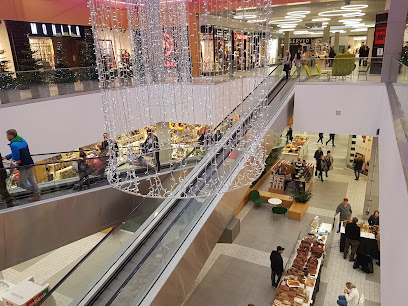
Outlet Park Szczecin
Outlet Park Szczecin: Your ultimate destination for incredible shopping deals and leisure experiences in Szczecin.

OMNI Molo
Experience the best of shopping, dining, and entertainment at OMNI Molo, Szczecin's premier shopping mall.

Flying Tiger Copenhagen
Explore the colorful and quirky offerings at Flying Tiger Copenhagen, where unique gifts and joyful shopping await every visitor.

Yatta.pl
Explore Yatta.pl in Szczecin, Poland – a paradise for comic enthusiasts with a vast selection of comics, graphic novels, and collectibles.
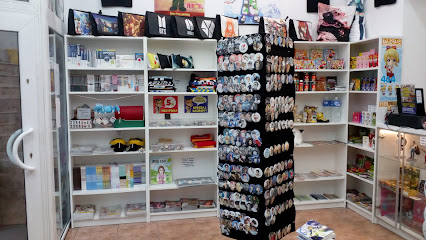
Lokaah
Explore Lokaah in Szczecin for a unique selection of oriental goods, from textiles to spices, perfect for souvenirs and gifts during your travels.

SCALE Shop Plastic Szczecin
Explore the creative heart of Szczecin at SCALE Shop Plastic, where art supplies meet unique gifts in a vibrant shopping experience.

Bershka
Explore the latest fashion trends at Bershka in Szczecin, where style meets affordability for every fashion enthusiast.

Souvenirs from Szczecin
Explore the essence of Szczecin at Souvenirs from Szczecin, where unique local crafts and heartfelt mementos await your discovery.

VAN GRAAF Szczecin
Discover the latest fashion trends at VAN GRAAF Szczecin, your go-to clothing store for stylish men's and women's apparel in Poland's beautiful city.

Nike Store
Shop the latest athletic gear and stylish apparel at the Nike Store in Szczecin, the ultimate destination for sports enthusiasts.
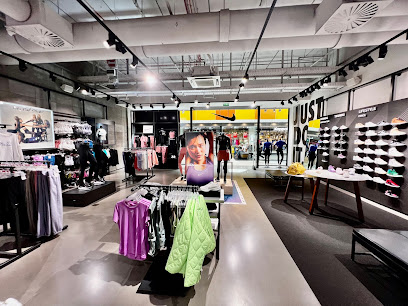
Prezentmarzeń
Explore Prezentmarzeń in Szczecin for unique gifts, local souvenirs, and expert event planning, all designed to make your memories unforgettable.

AVANTI
Explore AVANTI in Szczecin for a delightful shopping experience, offering a variety of stylish clothing at great prices.

Essential bars & hidden hideouts
17 Steps Cocktail Bar
Discover the best cocktails in Szczecin at 17 Steps Cocktail Bar, where creativity meets quality in a vibrant atmosphere.
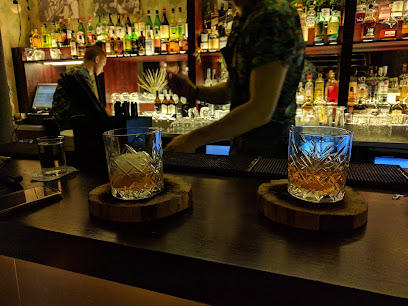
Pub Exp
Discover the lively essence of Szczecin at Pub Exp, a brewpub that delights with local beers and a vibrant social scene.

Irish Pub Dublin
Discover the vibrant atmosphere of Irish Pub Dublin in Szczecin, where hearty meals and craft beers create unforgettable memories.

Český film
Experience the best of local brews and hearty Czech cuisine at Český Film Brewpub in Szczecin, a must-visit for food and beer lovers.

Cybermachina
Explore the vibrant nightlife of Szczecin at Cybermachina, a stylish bar offering an eclectic mix of drinks and a lively atmosphere.

The Office - Craft Beer Pub
Discover the vibrant craft beer scene at The Office - Craft Beer Pub in Szczecin, where local brews and a welcoming atmosphere await.

Pub Promil
Experience the best of Szczecin's craft beer culture at Pub Promil, where quality brews and delicious food create unforgettable moments.

The Ptak i Pies Cocktail Bar
Discover a stylish blend of cocktails and ambiance at The Ptak i Pies Cocktail Bar in the heart of Szczecin, perfect for a memorable night out.

Pub Coolturka
Experience the local craft beer scene at Pub Coolturka in Szczecin, a vibrant brewpub with a unique atmosphere and delicious bites.

NIEBO Wine Bar Cafe
Discover the Mediterranean flavors at NIEBO Wine Bar Cafe in Szczecin, where delicious cuisine meets a cozy atmosphere and exceptional wine selection.

Boston Pub&Club
Discover Szczecin's nightlife at Boston Pub&Club, where craft brews and vibrant music create unforgettable memories in a lively atmosphere.
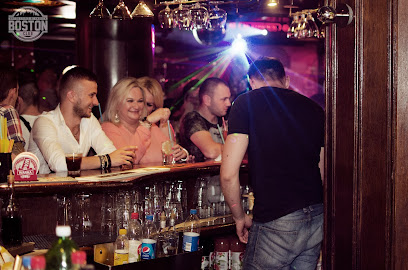
Prosto z Beczki
Experience the vibrant nightlife of Szczecin at Prosto z Beczki, a cocktail bar renowned for its creative drinks and lively atmosphere.
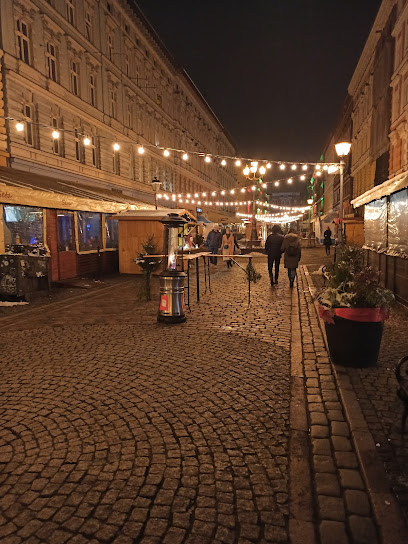
Relanium_Pub
Discover the heart of Szczecin's nightlife at Relanium Pub, where local beers and vibrant entertainment await in a welcoming atmosphere.

DOBRE SHOTY
Experience the vibrant nightlife at DOBRE SHOTY, Szczecin's favorite bar for cocktails and good company.

Bar at the Red Town Hall
Experience the vibrant ambiance and local charm at the Bar by the Red Town Hall in Szczecin, the perfect spot for relaxation and socializing.

Local Phrases
-
- HelloCześć
[cheshch] - GoodbyeDo widzenia
[do veedzenya] - YesTak
[tak] - NoNie
[nye] - Please/You're welcomeProszę
[prosheh] - Thank youDziękuję
[dzyen-koo-yeh] - Excuse me/SorryPrzepraszam
[psheh-prah-sham] - How are you?Jak się masz?
[yak sh-eh masz] - Fine. And you?Dobrze. A ty?
[dob-zheh. ah ti] - Do you speak English?Czy mówisz po angielsku?
[chi moovish po ahn-gyel-skoo] - I don't understandNie rozumiem
[nye roh-zoo-myem]
- HelloCześć
-
- I'd like to see the menu, pleaseChciałbym zobaczyć menu, proszę
[khyal-bim zobach-chich menu, prosheh] - I don't eat meatNie jem mięsa
[nye yem myen-sa] - Cheers!Na zdrowie!
[na zdrov-yeh] - I would like to pay, pleaseChciałbym zapłacić, proszę
[khyal-bim zap-wa-cheech, prosheh]
- I'd like to see the menu, pleaseChciałbym zobaczyć menu, proszę
-
- Help!Pomocy!
[po-mo-tsi] - Go away!Idź sobie!
[eedzh soh-bye] - Call the Police!Zadzwoń po policję!
[zadz-vohn po po-lit-syeh] - Call a doctor!Zadzwoń po lekarza!
[zadz-vohn po leh-kar-za] - I'm lostZgubiłem się
[zgoo-bee-wem shyeh] - I'm illJestem chory
[yeh-stem hoh-ri]
- Help!Pomocy!
-
- I'd like to buy...Chciałbym kupić...
[khyal-bim koo-pich] - I'm just lookingTylko się rozglądam
[til-ko shyeh rohz-gwam] - How much is it?Ile to kosztuje?
[ee-leh to kosh-too-ye] - That's too expensiveTo za drogie
[toh za dro-ghyeh] - Can you lower the price?Czy możesz obniżyć cenę?
[chi mo-zhesz ob-nee-zhich tseh-neh]
- I'd like to buy...Chciałbym kupić...
-
- What time is it?Która jest godzina?
[ktoo-rah yest goh-dzee-nah] - It's one o'clockJest pierwsza
[yest pyer-vsheh] - Half past (10)Pół do dziesiątej
[poo do djyeh-shont-ey] - MorningRano
[rah-no] - AfternoonPopołudnie
[po-po-woo-dnyeh] - EveningWieczór
[vyech-oohr] - YesterdayWczoraj
[v-choh-rye] - TodayDziś
[dzhish] - TomorrowJutro
[yoo-tro] - 1Jeden
[yeh-den] - 2Dwa
[dvah] - 3Trzy
[tshi] - 4Cztery
[ch-ter-ih] - 5Pięć
[pyen-ch] - 6Sześć
[sheshch] - 7Siedem
[shyeh-dem] - 8Osiem
[oshyem] - 9Dziewięć
[dzyev-nyeh-ch] - 10Dziesięć
[djyeh-shontch]
- What time is it?Która jest godzina?
-
- Where's a/the...?Gdzie jest...
[g-dzhe yest] - What's the address?Jaka jest adres?
[yah-kah yest ah-dres] - Can you show me (on the map)?Czy możesz mi pokazać (na mapie)?
[chi mo-zhesz mee poh-kah-zach (na mah-pee-eh)] - When's the next (bus)?Kiedy jest następny (autobus)?
[kyeh-dee yest nas-tem-neh (ow-toh-boos)] - A ticket (to ....)Bilet (do ...)
[bee-let (do)]
- Where's a/the...?Gdzie jest...
History of Szczecin
-
Szczecin's history dates back to the 8th century when it was a Slavic settlement. It became the capital of the Duchy of Pomerania in the 12th century, ruled by the Griffins dynasty. During this period, it flourished as a center of trade and culture.
-
In the 13th century, Szczecin became a member of the Hanseatic League, a powerful economic and defensive alliance of merchant guilds. This connection significantly boosted its economy, turning it into a bustling trade hub. The city's wealth during this period is reflected in its magnificent Gothic architecture.
-
The Thirty Years' War had a profound impact on Szczecin. In 1648, the Treaty of Westphalia awarded the city to Sweden. This period saw the construction of new fortifications and the introduction of Swedish administrative practices. Despite the turmoil of war, the city's strategic importance grew.
-
In 1720, Szczecin was transferred to Prussia as a result of the Treaty of Stockholm. The Prussian period brought industrial development and modernization. The establishment of shipyards and the construction of the Oder-Danube Canal were significant milestones that turned Szczecin into a major industrial center.
-
World War II brought extensive damage to Szczecin. The city was subjected to heavy bombing by the Allied forces, leading to the destruction of many historic buildings and infrastructure. After the war, Szczecin, initially seized by Soviet forces, was handed over to Poland as part of the Potsdam Agreement.
-
Post-war Szczecin underwent significant rebuilding efforts. The population, which had been predominantly German, saw a dramatic shift due to the forced migration policies. Polish settlers from various regions, including those displaced from the eastern territories annexed by the Soviet Union, formed the new demographic fabric of the city.
-
Today, Szczecin is a vibrant city that blends its rich history with modern developments. It is known for its maritime economy, cultural festivals, and educational institutions. The regeneration projects, including the revitalization of the waterfront and the construction of the Philharmonic Hall, symbolize its dynamic transformation.
Szczecin Essentials
-
Szczecin is well-connected by various modes of transportation. The nearest airport is Szczecin-Goleniów 'Solidarność' Airport (SZZ), located about 45 km northeast of the city center. Regular flights connect Szczecin with major European cities. From the airport, you can take a taxi, shuttle bus, or train to reach the city center. Additionally, Szczecin is accessible by train from major Polish cities like Warsaw, Poznań, and Gdańsk, as well as from Berlin in Germany. Long-distance buses also serve the city, and the A6 motorway provides a convenient route for those traveling by car.
-
Public transportation in Szczecin includes trams, buses, and regional trains, operated by ZDiTM. Tickets can be purchased at kiosks, ticket machines, or via mobile apps, and must be validated upon boarding. Taxis are readily available and can be hailed on the street or booked via phone or app. Biking is a popular mode of transport, with numerous bike lanes and bike-sharing services like 'Bike_S'. For those preferring to drive, car rentals are available, and parking zones are clearly marked with various payment options.
-
The official currency in Poland is the Polish Złoty (PLN). Credit and debit cards are widely accepted in hotels, restaurants, and shops. However, it is advisable to carry some cash for small purchases or in places that may not accept cards. ATMs are plentiful throughout Szczecin, and currency exchange offices (Kantor) offer competitive rates. Mobile payment options like Google Pay and Apple Pay are increasingly accepted.
-
Szczecin is generally a safe city for tourists, but standard precautions should be taken. Avoid poorly lit areas and parks at night, and be cautious in crowded places to prevent pickpocketing. Specific neighborhoods to be extra cautious in include Niebuszewo and Pomorzany, particularly after dark. It's always best to stay vigilant and aware of your surroundings.
-
In case of emergency, dial 112 for immediate assistance, which connects you to police, fire, and medical services. The main hospital in Szczecin is the Independent Public Clinical Hospital No. 1 PUM, located at Unii Lubelskiej 1. Pharmacies (Apteka) are widely available, and some operate 24/7. It is advisable to have travel insurance that covers medical emergencies.
-
Fashion: Do dress smart-casual when dining out, and wear comfortable, weather-appropriate clothing for sightseeing. Avoid overly revealing attire. Religion: Do respect religious customs, especially in churches. Men should remove hats, and both men and women should dress modestly. Public Transport: Do give up your seat to elderly passengers, pregnant women, and people with disabilities. Don’t eat or drink on public transport. Greetings: Do greet people with a firm handshake and maintain eye contact. Poles appreciate a polite greeting like 'Dzień dobry' (Good day). Eating & Drinking: Do try local delicacies and accept food or drink offerings graciously. Don’t leave food on your plate, as it is considered wasteful.
-
To experience Szczecin like a local, visit the Central Cemetery, one of Europe’s largest and most beautiful, which also serves as a park. Enjoy a stroll or a bike ride along the scenic Odra River boulevards. Check out the local food markets like 'Bazar Smakoszy' for fresh produce and regional specialties. Engage with locals at cafes and pubs; they are generally friendly and open to conversation. Don’t miss the chance to explore the underground WWII bunkers, which offer a unique glimpse into the city’s history.
Trending Landmark in Szczecin
-
Wały Chrobrego
-
Pomeranian Dukes' Castle in Szczecin
-
Plac Jasne Błonia im. Jana Pawła II
-
Kasprowicz Park
-
Harbour Gate
-
Szczecin Boulevards
-
Museum of Technology and Transportation - Art Depot in Szczecin
-
Archcathedral Basilica of St. James the Apostle
-
Różanka Rose Garden
-
Park Żeromskiego
-
Craneosaurs
-
Solidarity Square
-
Underground Stettin Routes
-
Bismarck Tower in Szczecin
-
Memorial of the Poles' Feat
Nearby Cities to Szczecin
-
Things To Do in Berlin
-
Things To Do in Potsdam
-
Things To Do in Rostock
-
Things To Do in Poznan
-
Things To Do in Bydgoszcz
-
Things To Do in Lubeck
-
Things To Do in Næstved
-
Things To Do in Dresden
-
Things To Do in Køge
-
Things To Do in Torun
-
Things To Do in Leipzig
-
Things To Do in Copenhagen
-
Things To Do in Sopot
-
Things To Do in Gdansk
-
Things To Do in Roskilde













